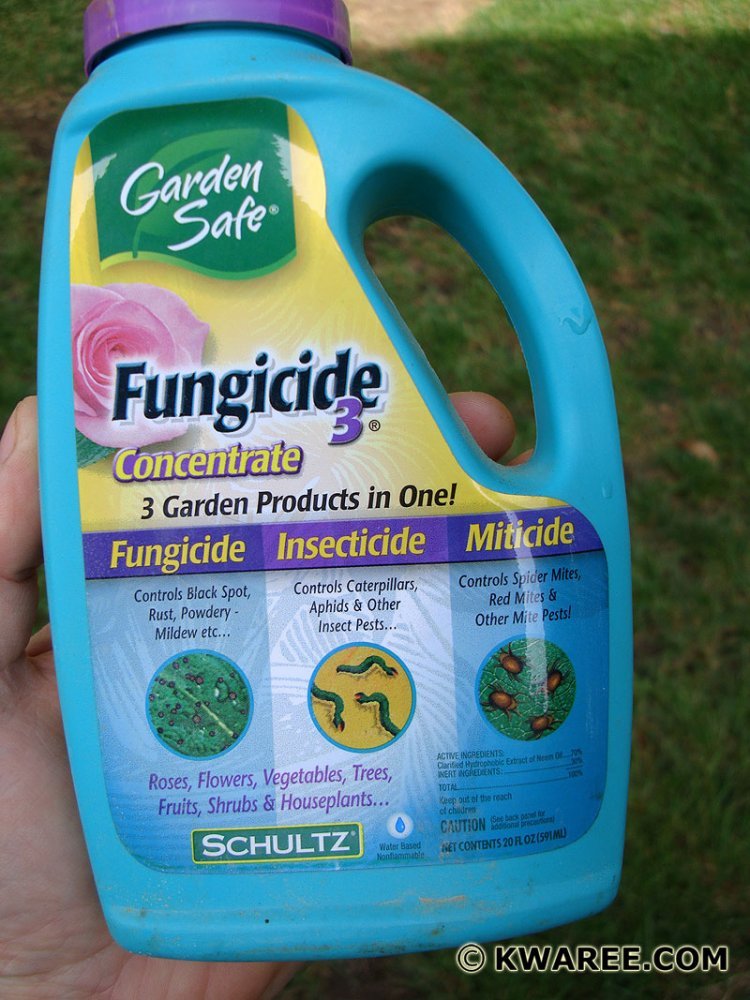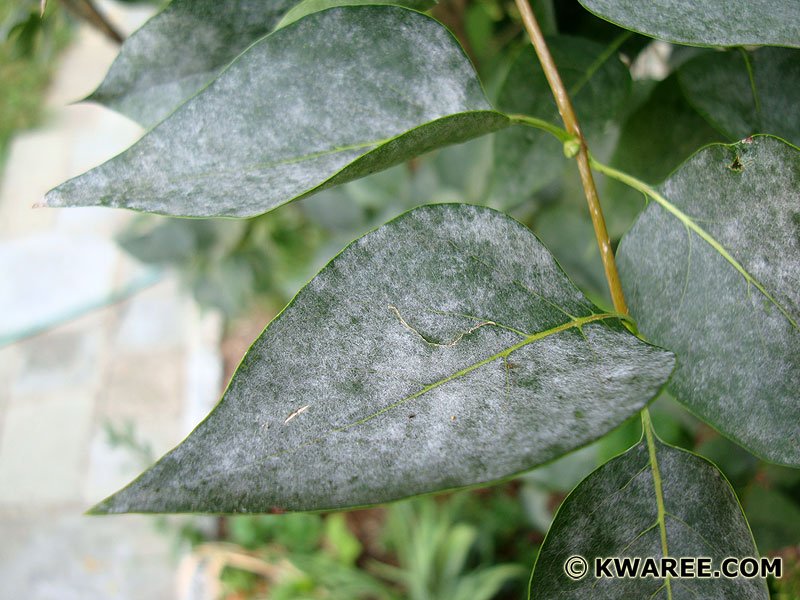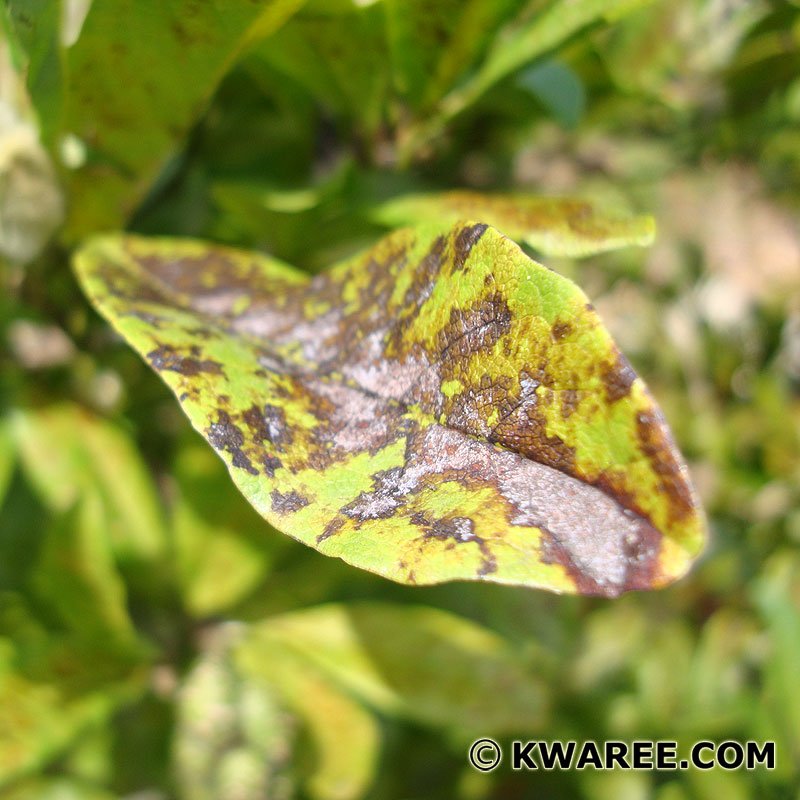JodyBuchanan
Member
- Joined
- May 10, 2021
- Messages
- 138
- Reaction Score
- 0
- Points
- 21
- #1
I was sitting on the front steps a few days ago when I looked to my left. I noticed a strange white powdery substance on the branches and stems of the Lilac bush right in front of the house. I stood up and walked towards it. As I got closer, I noticed a whitish coating on all of the leaves. I knew something was wrong. I have seen the white stuff on the leaves before, but I just thought that was the way things were supposed to be. The white stuff on the woody parts of the plant gave me concern.
I went inside and started doing some searches on the internet for “white coating on lilac leaves” and so on. I got the results I was looking for rather quickly. Apparently, “Powdery Mildew” is very popular. It infects a variety of plants and trees, with the Lilac being one of them.
There are any number of remedies to deal with Powdery Mildew, but they all boil down to doing one thing…spraying the infected plant with a fungicide. Where was I going to get a fungicide? Oh no, not another trip to Home Depot.
As I sat there in deep thought, I remembered a few years back when our old neighbor, Tim, was cleaning out his garage. He cleverly made a pile of small bottles next to our basement door. He said that I could either keep the stuff or just get rid of them. Gee, thanks Tim. Well, as it turns out, I kept them and I’m glad I did. I recently discovered that a few of the bottles contained a fungicide that can be used to deal with Powdery Mildew, Black Spot, Rust, etc… It’s called “Garden Safe Fungicide 3” and uses an oil extract from the Neem tree, a native of India. The active ingredient in this fungicide is called clarified hydrophobic extract of neem oil, to be exact. It’s non-toxic and safe for the environment.





I decided to give the shrub a nice spraying of this fungicide. I poured some of it into my handy dandy sprayer and hooked it up to the hose. I did my thing and sprayed the Lilac bush. I decided to leave it at that, just in case everything died because of it. The directions say to do this every seven days to eradicate the Powdery Mildew from the plant. A few days have gone by and I’m not noticing all that much of a difference. The good news is that nothing was killed because of the spray. I can now reapply and also tackle another shrub out in the front yard with what looks like rust spots on the leaves.
COMMENT: You probably know this already, since the article “Powdery Mildew on Lilac Leaves and Stems” was printed in 2009. Thanks for bringing this to your readers’ attention. However, I think the white coating on the stems is a scale insect, not powdery mildew. Having 30+ years of professional IPM experience, I’m fairly confident it’s scale. I have it on my privet hedge and have been able to control it with neem oil (or hort oil). I hope this is helpful; have a great autumn.
COMMENT: I sprayed neem oil on that bush numerous times to no avail. I’m not sure if neem oil gets old or what, but it didn’t do anything. I think I eventually cut it down.
COMMENT: I had the problem develop on young lilacs (3-4 yrs old) last summer for the first time. I can’t tell yet if the condition still exists, but if so I will try the neem oil. Fingers crossed, as I have been looking forward to these branches taking off.
COMMENT: We have a lilac bush which in the past has bloomed beautifully. This year, not as nice. The other day I went to trim it a little and noticed that some of the bark has a powdery mold, some of the areas of branches are dying. Is there anything I can spray on the tree to save it?
I went inside and started doing some searches on the internet for “white coating on lilac leaves” and so on. I got the results I was looking for rather quickly. Apparently, “Powdery Mildew” is very popular. It infects a variety of plants and trees, with the Lilac being one of them.
There are any number of remedies to deal with Powdery Mildew, but they all boil down to doing one thing…spraying the infected plant with a fungicide. Where was I going to get a fungicide? Oh no, not another trip to Home Depot.
As I sat there in deep thought, I remembered a few years back when our old neighbor, Tim, was cleaning out his garage. He cleverly made a pile of small bottles next to our basement door. He said that I could either keep the stuff or just get rid of them. Gee, thanks Tim. Well, as it turns out, I kept them and I’m glad I did. I recently discovered that a few of the bottles contained a fungicide that can be used to deal with Powdery Mildew, Black Spot, Rust, etc… It’s called “Garden Safe Fungicide 3” and uses an oil extract from the Neem tree, a native of India. The active ingredient in this fungicide is called clarified hydrophobic extract of neem oil, to be exact. It’s non-toxic and safe for the environment.





I decided to give the shrub a nice spraying of this fungicide. I poured some of it into my handy dandy sprayer and hooked it up to the hose. I did my thing and sprayed the Lilac bush. I decided to leave it at that, just in case everything died because of it. The directions say to do this every seven days to eradicate the Powdery Mildew from the plant. A few days have gone by and I’m not noticing all that much of a difference. The good news is that nothing was killed because of the spray. I can now reapply and also tackle another shrub out in the front yard with what looks like rust spots on the leaves.
COMMENT: You probably know this already, since the article “Powdery Mildew on Lilac Leaves and Stems” was printed in 2009. Thanks for bringing this to your readers’ attention. However, I think the white coating on the stems is a scale insect, not powdery mildew. Having 30+ years of professional IPM experience, I’m fairly confident it’s scale. I have it on my privet hedge and have been able to control it with neem oil (or hort oil). I hope this is helpful; have a great autumn.
COMMENT: I sprayed neem oil on that bush numerous times to no avail. I’m not sure if neem oil gets old or what, but it didn’t do anything. I think I eventually cut it down.
COMMENT: I had the problem develop on young lilacs (3-4 yrs old) last summer for the first time. I can’t tell yet if the condition still exists, but if so I will try the neem oil. Fingers crossed, as I have been looking forward to these branches taking off.
COMMENT: We have a lilac bush which in the past has bloomed beautifully. This year, not as nice. The other day I went to trim it a little and noticed that some of the bark has a powdery mold, some of the areas of branches are dying. Is there anything I can spray on the tree to save it?
